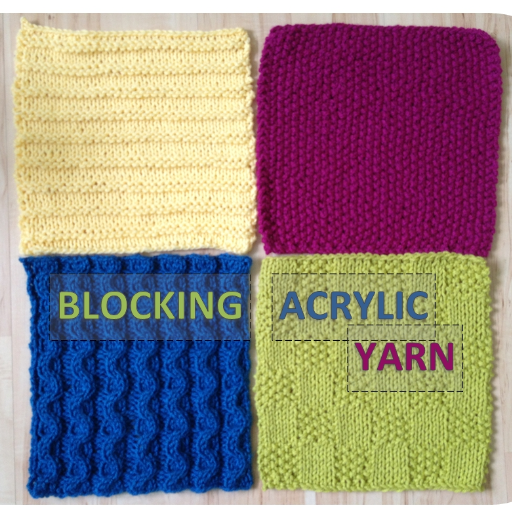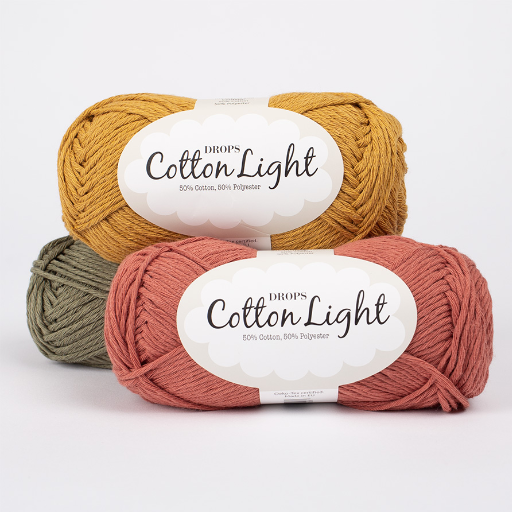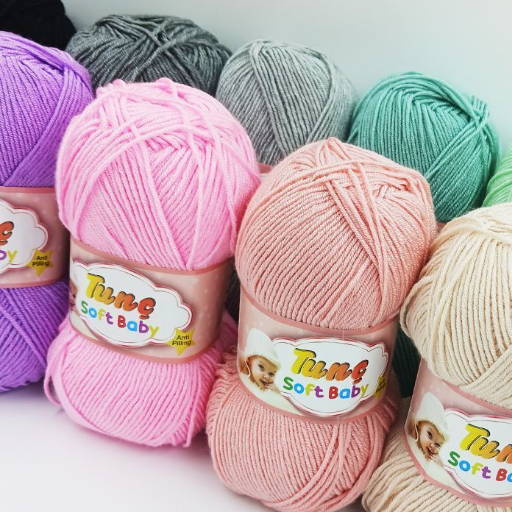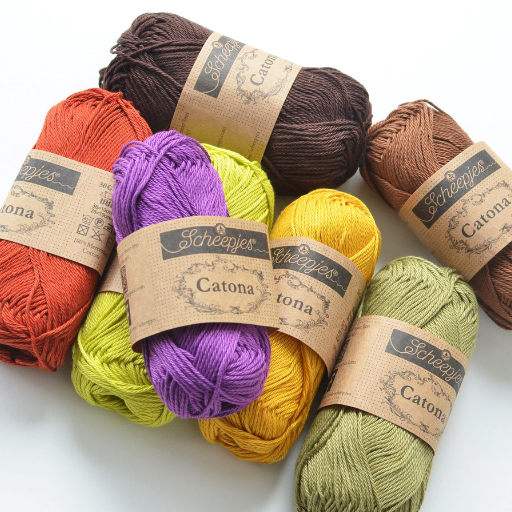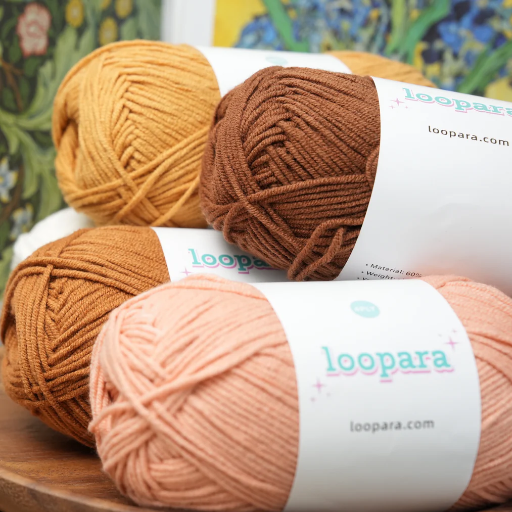Sewing is both an art and a science, requiring precision, skill, and the right tools to achieve flawless results. Among the myriad components of sewing, the thread plays a pivotal role, serving as the essential material that binds pieces of fabric together. However, understanding the nuances of sewing machine thread—from its types to its applications—is often an overlooked aspect of mastering the craft. This guide is designed to provide you with a comprehensive understanding of sewing machine thread, addressing its various types, material compositions, weights, and compatibility with different fabrics and sewing machines.
Whether you are a beginner eager to expand your knowledge or an experienced sewist looking to refine your techniques, this guide will equip you with detailed insights to select and use the right thread for any project. By exploring key factors such as thread tension, maintenance, and troubleshooting common issues, you’ll develop the confidence to handle even the most intricate sewing endeavors. Prepare to unravel the complexities of sewing machine thread and elevate your sewing expertise to a professional level.
What Are the Different Types of Thread for Sewing Machines?

When it comes to sewing machines, thread types can be broadly categorized based on material composition and specific applications. The most commonly used threads include:
- Cotton Thread: Ideal for light to medium-weight woven fabrics. It is strong, has minimal stretch, and works well for natural fibers.
- Polyester Thread: A versatile, durable thread suitable for a wide range of fabrics, including both woven and knit materials. Its slight elasticity makes it a popular choice.
- Nylon Thread: Commonly used for heavy-duty projects, such as upholstery or outdoor gear, due to its strength and resistance to wear.
- Silk Thread: A luxurious option often reserved for delicate fabrics or high-end projects. Its fine texture and smooth finish make it perfect for intricate detailing.
- Metallic Thread: Used for decorative stitching, this thread adds a shiny, reflective quality to embroidery and other design elements.
- Elastic Thread: Designed for stretchable garments, this thread is used primarily in shirring or creating gathered effects.
- Specialty Threads: Threads like invisible (monofilament), quilting, or embroidery thread cater to specific techniques and finishes.
Choosing the correct thread type depends on fabric type, project requirements, and the desired finish. Always match thread properties carefully to achieve optimal results.
Exploring Polyester Thread and Its Uses
Polyester thread, a synthetic fiber loved because of its strength and durability, has many other prominent features. For instance, It does not mildew, stretch, or shrink. It caters to both hand sewing and machine sewing which makes it popular among artisans and businesses alike. The nature of this flexible thread makes it knit seamlessly with the fabric without worrying about any breakage or puckering during the stitching. Even more so, its ability to hold dyes and maintain color under the sun or while being washed is unimpressive.
Common uses for polyester thread include garment construction, quilting, upholstery, and embroidery. It has become commonplace to add a touch of superior embroidery, thoughtfully quilt, and sew garments together with the enduring, adaptable thread. Combining strength with elasticity makes high tension seams and embroidered designs easier to create. A major phenomenon here is that, when adding a touch of supple embroidery on various fabrics, a sewing specialist often decides to get a blended polyester thread to avoid the negative fabric compatibility.
The Benefits of Using Cotton Thread in Your Projects
Cotton thread’s adaptability allows it to be especially useful when sewing natural fabrics because it and the material can easily blend. Cotton thread, which is formed from cellulose fibers, is an eco-friendly substance as it is biodegradable and ideal for sustainable practices. Its soft low-luster finish allows seams to be hidden within fabrics, which makes it perfect for quilting, patchwork, and garment construction, which need subtle details.
An undeniable advantage of cotton thread is heat resistance as it can manage high ironing temperatures. This property is crucial when it comes to tailoring or preparing a garment. Moreover, with little stretch, cotton thread ensures that stitches stay intact long after the fabric has been put under tension, The thread is ideal for projects where precise durability is necessary such as heirloom sewing.
Nonetheless, in contrast to polyester, cotton thread lacks the strength which makes it shed readily during high-stress events. Because of this, it may be best used for seams that are low-stressed or in combination with bolstered stitches. Yet, regardless of the few setbacks, the smooth thread is cotton’s advantageous formulation makes it ideal for projects that require a classic professional touch.
Understanding Nylon Thread and Its Applications
Nylon threads have become increasingly popular for many industrial as well as decorative sewing tasks because of their remarkable strength and elasticity. They are also high on tensile strength, which means they can handle high amounts of tension without breaking apart. This is exceptionally useful for heavy duty fabrics like canvas, leather, or even upholstery. Their elasticity ensures that seam integrity is never compromised, as they can move with the fabric’s movements.
Due to the attributes of nylon threads, they are also resistant to abrasion, moisture, and mildew, which makes them beneficial for outdoor uses such as tent making, marine projects, and awnings. Nevertheless, they are sensitive to prolonged exposure to sunlight. This can cause degradation over some time, but can be managed with UV resistant coatings that help mitigate this limitation. Additionally, nylon threads tend to be less resistant to heat. More caution is needed when pressing or ironing projects to help avoid damage. All of these attributes work together to make nylon threads a very versatile instrument in the hands of both commercial and creative settings.
How to Choose the Best Sewing Thread for Your Project?

When choosing the best sewing thread for your project, consider the following key factors:
- Material Compatibility: Ensure the thread material matches your fabric. For example, cotton thread works best with natural fabrics, while polyester and nylon are ideal for synthetic or stretch fabrics.
- Thread Strength: For heavy-duty applications like upholstery or outdoor projects, select strong threads such as nylon or polyester.
- Thread Weight: Match the thread weight with your fabric thickness. Thicker fabrics require heavier threads for better durability.
- Project Environment: If your project involves exposure to moisture, UV light, or mildew, opt for threads that are specially treated for resistance, such as UV-coated nylon or polyester threads.
- Machine or Hand Sewing: Some threads are better suited for machine sewing, while others excel in hand sewing applications. Ensure compatibility with your tools.
- Color Matching: Choose a color that complements or blends seamlessly with your fabric. For decorative stitching, contrasting colors may be desirable.
- Specialized Needs: For embroidery or quilting, consider specialty threads designed specifically for these purposes.
By evaluating these aspects, you can select a sewing thread that fulfills the functional and aesthetic needs of your project effectively.
Factors to Consider in Thread Weight
Selecting the appropriate thread weight is crucial for achieving professional and durable results in any sewing project. Thread weight typically ranges from 12 (thicker) to 80 (finer), and the choice should align with the fabric’s thickness and the project’s specific requirements. Here are the key factors to consider:
- Fabric Thickness and Type: Lighter fabrics, like silk or chiffon, pair well with finer threads such as 50wt or higher to prevent puckering. Heavier fabrics, such as denim or canvas, require thicker threads like 30wt or 40wt for added strength and compatibility.
- Project Purpose: The end use of your project influences the thread weight. For example, quilting often uses 40wt for durability, while embroidery typically involves fine threads around 60wt for detailed designs.
- Stitch Definition: Thicker threads create bold, visible stitches, ideal for topstitching or decorative work. Conversely, finer threads contribute to smooth, less conspicuous seams, critical for high-finesse garments.
- Thread Strength: Heavier threads are generally stronger and more suitable for projects that will endure stress, like upholstery or outdoor gear. Finer threads work well where strength is less critical but precision is paramount.
- Compatibility with Sewing Machine Needle: Always match thread weight with an appropriate needle size to avoid breakage or skipped stitches. For instance, thicker threads may require larger needles, such as a size 90/14, while finer threads can use smaller needles like 60/8 or 70/10.
By considering these factors in tandem, you ensure the chosen thread weight is perfectly suited to your fabric, purpose, and desired aesthetic, which will enhance the overall quality of your sewing project.
Why Quality Thread Matters in Sewing
A thread’s quality greatly affects the durability, look, and functionality of the sewing task at hand. For example, high-quality thread will result in strong, secure stitches that outlast the test of time. Deficient threads, on the other hand, are prone to breaking, fraying, or causing tension issues which will compromise the structural integrity of the entire work.
Premium threads are designed for smoother usability to reduce the production of lint that causes needle jams during sewing while also protecting the machine from unnecessary strain. Additionally, high-quality threads consistently deliver an even, professional look. For item that are exposed to constant use such as upholstery, quilts, activewear, or sneakers, using high-grade threads tremendously favorable to prolonging their life.
All in all, whether sewing delicate or rough fabrics, the outcome can significantly be affected or maximized by using a well-made thread suitable for the project at hand.
Comparing Popular Thread Brands: Gutermann and Others
Gutermann has always been one of the preferred choices for sewists and crafters because of their superior threads, and they compete well with other popular brands. Gutermann threads have a blend of strength and finish which makes them suitable for a range of projects from delicate garments to heavy duty upholstery. The threads are made of high-grade polyester or cotton, which minimizes the build of lint, ensuring that sewing machines are protected from wear while allowing an uninterrupted stitching process.
Other alternatives available in the market include Coats & Clark and Aurifil. Affordability and availability is the hallmark of Coats & Clark threads, which are popular with beginners. Despite performing well with simple sewing projects, some users tend to have issues with the inconsistency of thread thickness. Aurifil is a brand for the more discerning quilting and embroidery lovers, providing a vast selection of cotton threads which are superbly finished. Although more expensive than cotton threads, Aurifil threads come with a host of richer colors and exceptional detail work.
In the end, the decision between these brands comes down to your preferences. For everyday sewing needs or for an exceptional finish, Gutermann is always a reliable option. If your focus is primarily on value for money, Coats & Clark serves as a practical option, while Aurifil suits best for delicate and beautiful projects.
What Thread Should I Use for Different Sewing Projects?

It all starts with understanding the role of the fabric while determining the purpose of the thread. For everyday sewing, strong and flexible ones like polyester are best, for example, Guterman. For quilting, cotton threads like Aurifil are perfect because they create a smooth finish on natural fiber fabrics. Rayon or polyester embroidery threads are best for embroidery because they are more colorful and provide vibrant details. For advanced sewing and alterations like upholstery or leatherwork, nylon or heavy-duty polyester work best as they are many times stronger and more durable. Stronger the thread, stronger the fabric seam. Selecting the proper thread and fabric type guarantees comprehensive functionality and visuals.
Choosing the Right Thread for Quilting
Selecting the appropriate thread for quilting depends on the fabric, project type, and desired finish. High-quality 100% cotton threads, such as Aurifil or Gutermann, are widely favored for quilting due to their smooth texture and compatibility with natural fiber fabrics. These threads create a clean, professional finish and reduce issues like lint build-up in the sewing machine. For machine quilting, polyester threads—including monofilament and trilobal polyester—are also excellent options because of their strength, slight elasticity, and vibrant color availability.
When quilting intricate patterns or densely stitched designs, a finer thread, such as 50-weight cotton, ensures precision while maintaining a subtle appearance. On the other hand, heavier threads (such as 40-weight or 30-weight) work well for bold, decorative stitches that stand out visually. It’s also crucial to choose a color that complements or contrasts the quilt top and backing, depending on the intended design effect. Always test thread tension and compatibility on fabric scraps to avoid inconsistencies or breakage during the quilting process.
Best Threads for Embroidery and Decorative Stitches
Achieving the best results when choosing threads for embroidery and decorative stitches requires patience, thread selection, and the type of thread used. Most embroidery experts prefer rayon threads because of their silk-like gloss and large, colorful range. They are the best threads for thick embroidery structures. On the other hand, rayon threads are dainty in their construction, which makes them prone to snapping. For these reasons, they are only ideal for light to medium stitches on smooth fabrics.
Another excellent alternative for embroidery is polyester threads. They are preferable due to the strength, durability, and fade resistance. These threads maintain their color even after several washes or exposure to sunlight. Therefore, they’re the best threads for long-term projects. A further benefit is that polyester threads are less susceptible to breaking than rayon, making them the best threads for quick machine embroidery stitches.
Metallic threads are great for adding high impact beautification to embroidery stitches. They stand out from the rest of the threads because they are made of a polyester core wound in a metallic film which makes them shine. However, to avoid cranky situations like thread breakage or torque placing, a metallic needle MUST be used, and the thread tension must be reconfigured.
There is embroidery thread specially designed to make embroidery easier using fine embroidery. 50-weight thread in cotton excels at accuracy while producing a soft matte finish. Silk threads, though less common, are perfect for heirloom quality embroidery, as they are exquisitely smooth and burst with luster. No matter the type of thread, a sample stitch on a fabric swatch is a must-have to check thread compatibility, tension settings, and the quality of the stitch design overall.
How to Select Thread for Leather Sewing
Selecting the appropriate thread for leather sewing involves balancing strength, durability, and aesthetic appeal. The ideal thread for leatherwork typically depends on the type of leather, sewing method, and the final product’s purpose. Here are the critical factors to consider:
- Thread Material: Polyester and nylon threads are the most common choices for leather projects due to their strength and resilience. Polyester is preferred for outdoor applications as it is UV-resistant and less prone to degradation over time. Nylon, on the other hand, provides excellent elasticity, making it suitable for items subject to frequent flexing.
- Thread Thickness (Weight): Thread thickness, often measured in Tex or weight, significantly impacts the appearance and durability of the stitch. For hand-stitching leather, threads between 0.6 mm to 1.0 mm are favored for their ability to create visible, sturdy stitches. Machine sewing typically uses finer threads such as Tex 70 or Tex 90 to balance functionality and machine capability.
- Waxed vs. Unwaxed Threads: Waxed threads are ideal for hand-stitching since the wax coating enhances grip, prevents fraying, and aids in stitch consistency. For machine sewing, unwaxed threads are generally recommended to prevent machine build-up and ensure smooth operation.
- Needle Compatibility: The thread must complement the needle size to avoid breakages or skipped stitches. Leather needles, specifically designed with a chisel edge, are essential for piercing tough hides while maintaining tension integrity.
- Aesthetic Considerations: For decorative stitching, artisans often use contrasting thread colors or thicker threads to create emphasis. However, for subtle or blending stitches, matching the thread color and weight to the leather’s tone maintains a uniform appearance.
Testing the thread on leather scraps before starting the project is crucial. This step ensures proper tension settings, needle-thread compatibility, and the desired visual outcome. With the right thread selection, your leather sewing projects will achieve a professional finish.
How to Properly Use and Maintain Sewing Machine Thread?

- Thread Installation: Ensure the thread is correctly placed on the spool pin and guided through all threading points according to the machine’s manual. Incorrect installation can result in tension issues or thread breakage.
- Tension Adjustment: Set the correct thread tension for the fabric and stitch type. Test on a scrap first to ensure balanced stitches, avoiding loops or puckering.
- Clean the Machine Regularly: Dust, lint, and thread remnants can accumulate in the threading path and bobbin case. Clean these areas frequently to prevent blockages and ensure smooth thread operation.
- Use Quality Threads: Always select high-quality sewing threads that are free of knots or uneven twists. Low-quality threads may break often and cause uneven sewing results.
- Storage: Store threads in a clean, dry environment away from direct sunlight to prevent fading, weakening, or tangling.
By following these steps, you will maximize the lifespan of your sewing machine thread while ensuring consistent stitching performance.
Loading the Thread Spool Correctly
How a thread spool is loaded directly affects stitching results. Ensure that the spool pin is appropriately placed on the thread spool. For thread caps located horizontally, secure the cap on the spool so that it does not move during operation. For spool caps located vertically, make sure that the threaded portion of the spool remains unwound evenly.
Then, the thread should be pulled and guided through the necessary points. Passage should be made through a number of tension discs, thread guides, and take up levers. Avoid tangling or skipping any steps as these will affect stitch consistency and cause the thread to break. After threading, always double-check to ensure that the thread is correctly placed in all sewing machine components. Proper securing reduces machine downtime whilst enhancing sewing stitch quality.
Troubleshooting Common Thread Issues in Machine Sewing
When addressing thread issues in machine sewing, I focus on a few critical troubleshooting steps. First, I examine the threading process to ensure that the thread is correctly routed through all tension discs, thread guides, and the take-up lever. Often, skipped guides or improper threading is the primary cause of inconsistent stitches or thread breakage. Next, I check the tension settings—if the upper or bobbin tension is too tight or loose, it can cause puckering or unbalanced stitching. Additionally, I inspect the needle to confirm it’s the correct type and size for the thread and fabric being used. A dull or bent needle often leads to skipped stitches or fraying thread. Finally, I ensure regular machine maintenance—cleaning lint buildup and using high-quality thread to avoid unnecessary wear on machine components. These steps greatly enhance performance and prevent recurring issues.
Cleaning and Maintaining Your Thread and Sewing Machine
To maintain your sewing machine and thread effectively, I follow these key steps:
- How do I fix uneven stitches?
Uneven stitches are often caused by tension issues or lint buildup. First, I clean the bobbin case and remove any accumulated lint. Then, I gradually adjust the upper and lower tension settings until the stitches are even.
- What should I do when the thread isn’t catching?
If the thread isn’t catching, I check the needle’s position to ensure it’s correctly installed at the proper height. I also inspect the bobbin for any defects and replace it if necessary. Finally, I rethread both the upper thread path and the bobbin area carefully.
- How do I properly maintain my sewing machine?
Regular maintenance is critical. I clean all lint-prone areas like the bobbin case frequently and oil moving parts as recommended in the manual. Using high-quality thread also reduces residue buildup. Always refer to the user manual to follow specific maintenance instructions tailored to your machine.
By staying proactive with cleaning and ensuring proper threading, I keep my machine running smoothly and prolong its lifespan.
What Are the Best Practices for Storing and Organizing Thread?

Organizing and putting away threads aids in prolonging the quality and usability of the threads. Fading or weakening of the fibers can be caused by direct sunlight, thus threads need to be stored in a cool, dry place. To prevent tangling, threads should be kept in containers or racks that have separate compartments and also stored upright. For easy accessibility, threads should be grouped or color-coded, but sensitive threads like silk should be kept in sealed containers to protect them from dust and moisture. Old or damaged threads should be regularly inspected and discarded to prevent sewing complications.
Tips for Organizing Your Spool of Thread
- Use Dedicated Storage Solutions
Invest in thread racks, small storage bins, or drawer organizers designed specifically for sewing supplies. These keep spools visible and accessible while preventing tangling. Rack options with pegs allow spools to rest upright, maintaining their shape and reducing the risk of unraveling.
- Group Threads by Type and Purpose
Organize threads by material (e.g., cotton, polyester, silk) and by weight or size. This simplifies selection during projects and ensures you can quickly identify suitable options based on your sewing needs. Color-coded labeling or grouping can further enhance efficiency when searching for specific threads.
- Protect Threads from Environmental Damage
Store thread in cool, dry places away from direct sunlight, which can weaken fibers and cause discoloration over time. Consider using airtight containers for delicate threads to shield them from dust, moisture, and extreme temperature changes.
- Rotate and Inspect Regularly
Periodically check your thread collection for signs of wear, such as fraying, faded colors, or compromised tensile strength. Dispose of older or damaged spools that may affect the quality of your sewing output to maintain flawless stitches in your projects.
- Maximize Small Spaces
For compact storage, consider creative vertical solutions like wall-mounted racks or stackable bins. Alternatively, repurpose everyday items, such as jewelry organizers or over-the-door shoe racks, to store thread while optimizing space usage.
A Thread Guide to Proper Storage Solutions
Storing threads properly requires paying attention to the surrounding environment, the organization systems in place, and even the materials to be used. Threads ought to be stored in a dry and cool area that does not receive direct sunshine or high humidity. Over time, exposure to these elements can lead to thread quality degradation resulting in fraying, discoloration, or even weakened tension strength.
Thread storage solutions such as spool racks, clear acrylic boxes, and dedicated thread cases are perfect for optimal organization. Not only do these solutions make it easier to organize threads based on colors, types, or sizes, these options also eliminate tangling and excessive handling throughout long-term storage.
Make sure that the storage materials used are appropriate and compatible with the threads stored. Non-acid-free containers and plastic bags should be avoided at all costs since these will promote degradation after prolonged periods of contact. Good cataloging and proper labeling can also result in increased accessibility while preserving the threads for an extended period.
Preventing Thread Damage and Tangling
Tensioning, breakage, and tangling of threads are common problems that affect workflow performance, particularly in sewing, embroidery, and industrial applications. Correct thread choice, machine servicing, and operational methods contribute; thus, the machine operator needs to pay attention to all these aspects. First, it is important to use the right threads for the job. Poor quality threads can lead to breakage and fraying, which causes a myriad of problems. Also, clean and lubricate your sewing machine or tools regularly, for this will help eliminate lint and other waste materials that hinder free thread motion.
To avoid excessive settings, excessive thread tension must also be set, for this may result in sagging or uneven feeding. During the machine’s threading, the user should always follow the given instructions from the manufacturer, for bad threading is one of the leading reasons why tangles occur. Threads should be placed and stored in a clean and dry environment free from humidity, as they are exposed to deterioration and breach from contamination. Following these recommendations will alleviate thread breaks and tangles, ensuring efficiency and increasing the lifetime of the materials.
References
Frequently Asked Questions (FAQ)
Q: What are the essential sewing supplies needed for a beginner?
A: Essential sewing supplies for a beginner include a home sewing machine, a variety of sewing needles, polyester sewing thread, a sewing thread set, bobbin thread, fabric scissors, a measuring tape, pins, and a seam ripper. Having a good variety of thread types ensures you can handle different sewing applications.
Q: How do I choose the right thread type for my sewing project?
A: Choosing the right thread type depends on the fabric and purpose of your project. For general sewing, polyester sewing thread is versatile and strong. Cotton thread is ideal for natural fabrics, while serger thread is suitable for overlock stitches. For heavy duty sewing, use a purpose sewing thread or upholstery thread.
Q: What is the difference between home sewing machine thread and industrial sewing machine thread?
A: Home sewing machine thread is designed for everyday sewing tasks and typically comes in polyester or cotton. Industrial sewing machine thread is stronger, often made from bonded materials, and is suitable for heavy duty sewing and high-speed applications.
Q: How can I ensure the thread quality is suitable for my project?
A: To ensure thread quality, check for even thickness, smooth texture, and consistent color. High-quality thread, like Gutermann thread, reduces the risk of breakage and tangling. Polyester sewing thread is a reliable choice for many sewing projects due to its durability and elasticity.
Q: What is bobbin thread and how is it used in sewing?
A: Bobbin thread is a lightweight thread used in the bobbin of a sewing machine. It is essential for creating balanced stitches. When choosing a bobbin thread, ensure it complements the top thread and the fabric being used for sewing.
Q: Why is embroidery thread different from regular sewing thread?
A: Embroidery thread is specifically designed for decorative stitching. It has a sheen and comes in a wide range of colors. Unlike regular sewing thread, embroidery thread is often made from rayon or polyester, which provides a glossy finish.
Q: Can I use hand sewing thread in a home sewing machine?
A: While hand sewing thread can occasionally be used in a home sewing machine, it is not recommended for all projects. Machine threads, like polyester sewing thread, are designed to withstand the tension and speed of machine sewing, reducing the risk of breakage.
Q: What is the best way to store sewing thread to maintain its quality?
A: To maintain thread quality, store sewing thread in a cool, dry place away from direct sunlight. Use thread organizers or boxes to prevent tangling and dust accumulation. Keeping thread spools upright helps in maintaining their shape.
Q: How do I match thread color to fabric effectively?
A: To match thread color to fabric, choose a thread slightly darker than the fabric for a more cohesive appearance. For color thread matching, take a fabric swatch to the store to compare directly under natural lighting. This ensures a closer match for your sewing project.








